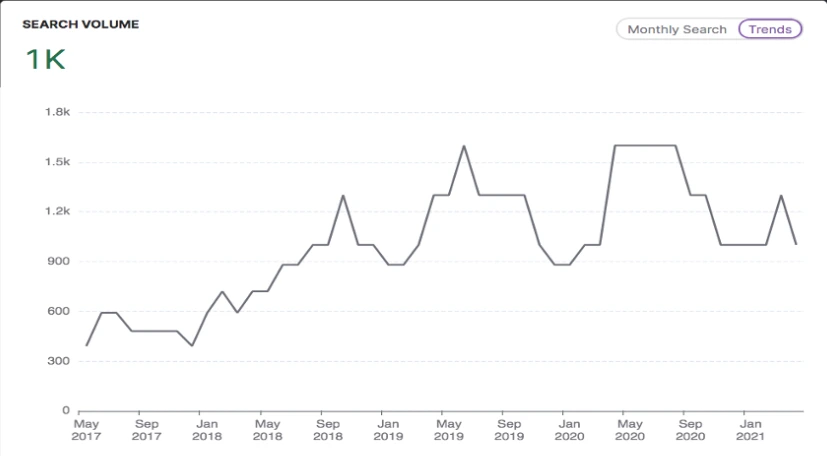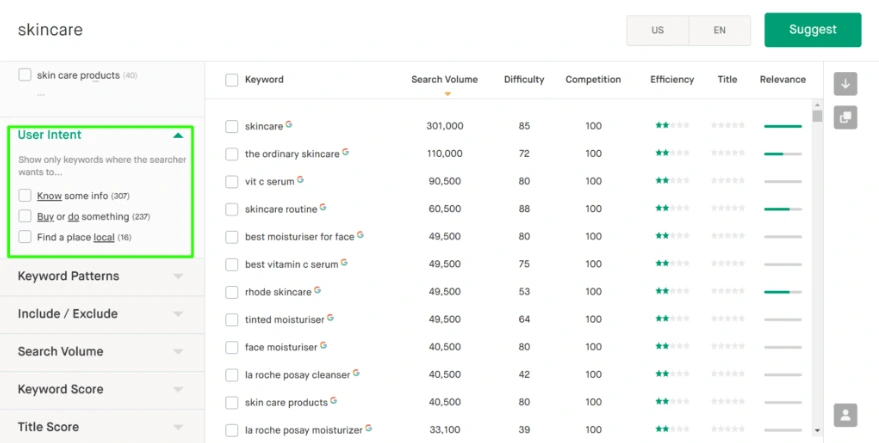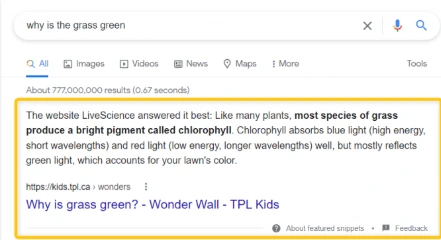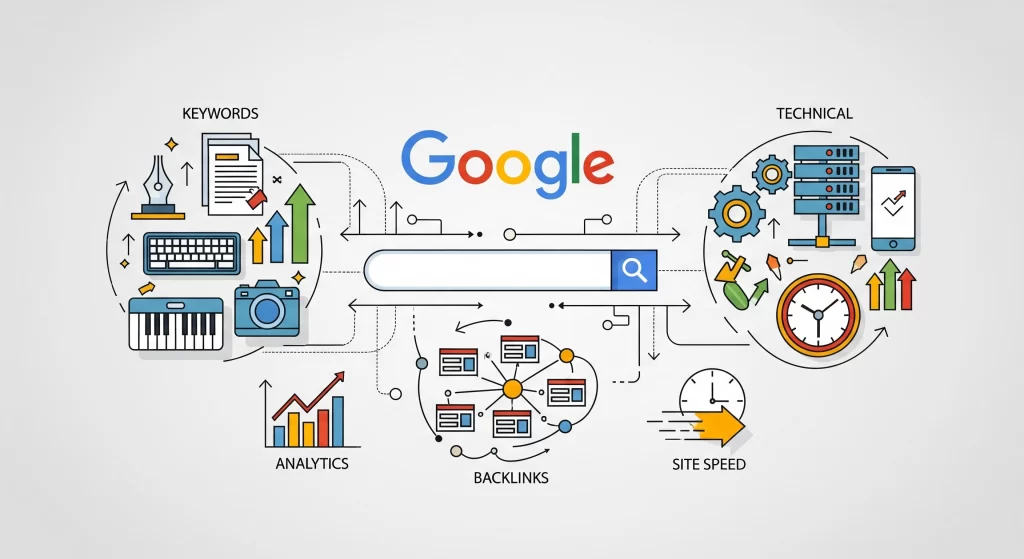Finally, after you heard from almost everyone(most of them with above average IQ) that SEO is important, you start working upon it.
You put many keywords into your content, and ta-da! Nothing happens. Why? Well, because SEO is much more than just putting keywords into your content.
(Graphic 1.1 – Gif of a frustrated chicken breaking laptop—showing the moment you realize keywords alone aren’t enough.)
So, how to increase search engine optimization on Google? We’ll answer that in this blog for you in a very easy to understand way so that even with no expertise, you can get every bit of it.
So, let’s begin!
What is Search Engine Optimization Google?

Graphic 1.2 – Screenshot of a graph showing search volume
SEO, Search Engine Optimization, is basically a process of making your website rank by ensuring it is easy for Google to understand. It’s how you help people find your site when they search for something.
Simply put, SEO is around helping search engines “crawl, index, and understand your content” so your pages can show up in results.
How to Increase Search Engine Optimization on Google: The Basics
When you’re just starting out, you can do these activities to improve the SEO:
A. Keyword Research: Step One

Graphic 1.3 Screenshot showing different keywords based on user intent
It is where things start. You need to look for the words that people type on their Google search bar. These words are called keywords. These are your bridge to visitors. Think of keywords like a bridge that’s connecting your content to search queries people have been looking for on Google.
To start:
- Google Keyword Planner is a great tool for beginners(although, even experts use it because it’s so good) or free suggestions in Google search.
- Look for long-tail keywords, which are longer phrases (e.g., “best running shoes for beginners”). They’re easier to rank for.
- Understand searcher intent, ask: Are they looking for information? Trying to buy something? Then tailor your pages accordingly.
B. On-Page Optimization: Make It Clear
Graphic 1.4 GIF of a boy clearing a table, showing how to tidy up your site for better optimization.
On-page SEO means improving the stuff on your pages so Google and people understand them easily. Key elements include.
- Title Tag: The main title that appears in search results include your keyword (e.g., “How to Increase Search Engine Optimization on Google – Simple Guide”).
- Meta Description: Short summary below the title. It should include the keyword and invite clicks.
- Header Tags (H1, H2, H3, …): These structure your content and use keywords naturally.
- URLs: Keep them short and include the keyword (e.g., …/increase-seo-google).
- Alt Text for Images: Describe images using your keywords, Google can’t “see” images, but reads the text.
- Internal Links: Link to other pages that are on your website to help users and Google navigate your site.
C. Create Great Content That Answers Questions
Graphic 1.5 – GIF of a meditating man being lifted by a spaceship, showing how answering queries can boost your rankings.
High-quality content is what users love, and so does Google. The better your content answers people’s questions, the more likely Google will rank it higher. A content that’s useful, clear, and regularly updated is the one awarded with high rankings.
Solve your industry’s problems with helpful content. If it’s good, trusted websites will share and link to it, and that helps you rank higher on Google.
D. Backlinks: Endorsements from Other Websites
Graphic 1.6 – Spongebob posting a letter, symbolizing a vote of confidence.
When another website links to a site, it is called backlink. This is like a vote of confidence for your site. Google looks at how many backlinks you have, how good they are, and how relevant they are to your topic.
The ones who tick all the good points are rewarded with higher rankings.
Because, you’re just starting out, you can:
- Create content others want to share.
- Reach out and ask blogs or friends to link to your page.
- Guest post on other sites to include a link back to yours.
E. Technical SEO: The Invisible Gear
Graphic 1.7, Bolt being tightened, symbolizing the technical fixes in SEO.
Technical SEO is another aspect of SEO that has more to do with the things happening behind the screens. Below are the basics, you need to know about:
- Site Speed: Fast pages keep visitors happy, and Google rewards them.
- Mobile-Friendliness: Most people search on phones now. Make sure your site works great on small screens.
- Clean URL Structure: Simple, meaningful links help everyone.
- Fix Broken Links & Duplicate Content: These confuse Google and users. Make sure to clean them up.
How Much Does Google Search Engine Optimization Cost?
You may wonder, how much does Google search engine optimization cost. Well, it varies.
- On average, monthly SEO services cost between $1,000–$2,500.
- Some sources say $1,500–$5,000 per month.
- For big campaigns, it can grow much more, sometimes $10,000–$20,000+ per month.
- Freelancers often charge $50–$100/hour, while agencies cost more, especially in the U.S.
But hey! Even without paying anything, you can start SEO yourself. It just takes time and learning. If you need SEO services with guaranteed success, you can count on us.
Tools That Help You Do SEO on Google
You don’t need to guess everything. Use tools.
Trusted tools in 2025 include:
- Semrush: All-in-one SEO tool. It is expensive but worth it. It has keyword planning, site audits, competitor analysis options.
- Ahrefs: Best for finding who links to you.
- SurferSEO: AI-powered content help.
- Moz Pro: For tracking progress and analyzing.
- RankIQ, MarketMuse, Clearscope: Help shape content.
- And don’t forget free tools like Google Search Console and Google Analytics
Setting Up Free Google Tools: Your SEO Command Center
Before anything else, you can learn how to do Google search engine optimization much more effectively by using Google’s own tools, completely free and super beginner-friendly.
A. Google Search Console (GSC): How It Helps
What is Google Search Engine Optimization? One big part is helping Google understand your site. GSC is like your site’s report card, showing how Google “sees” your site, what keywords bring people in, and if there are errors.
How to set it up (simplified):
- Go to Search Console and add your site. Choose Domain or URL prefix (URL is easiest for beginners).
- Verify ownership, easiest via plugins (WordPress) or adding a tiny file/meta tag or using DNS.
- Submit your sitemap (like yourblog.com/sitemap.xml) so Google can find your page and index it quicker.
Once setup:
- Use the Performance report to see clicks, impressions, average position, and queries, that’s your insight on how to search engine optimization Google effectively.
- Check the Coverage tab to find errors and fix them, like crawl faults or pages not being indexed.
Extra bonus: GSC can tell you if there are any potential security issues or site bugs that you need to fix fast.
B. Google Analytics (GA): Know Your Visitors
Google SEO means making your site easy for Google to find and rank. Another part is knowing how visitors use your site. That’s where Google Analytics helps, it’s like a spyglass that shows who’s visiting, how long they stay, and what they do.
Setup is easy:
- Go to analytics.google.com → Create an account and property (your site).
- Copy the tracking code and paste into your site’s <head> section or use Site Kit plugin (WordPress).
- Optionally, connect GA and GSC. Then you can see search data and analytics together in one dashboard.
Tracking Success: SEO Metrics Even You Can Understand
Once you’ve set up those tools, it’s time to track how you’re doing. You’ll learn how to increase search engine optimization on Google by keeping an eye on a few key numbers.
Important metrics to watch:
- Organic traffic: How many visitors reached your site from Google (not ads).
- Keyword rankings & impressions: Which search terms show your site and how often. Helps with understanding what Google notices.
- Click-through rate (CTR): How often people click your page after seeing it in search results.
- Bounce rate & time on page: Do people leave immediately or stay and read? That tells you if your content is helpful.
- Conversions: Actions that matter like newsletter signups, contact form fills, sales. Set these up in GA and track them.
- Backlinks & referring domains: Show that other sites trust you, boosting your credibility.
How to monitor these metrics:
- Use GSC for impressions, CTR, keyword data, and performance.
- Use GA to watch traffic sources, user behavior, conversions, and engagement.
- Check regularly, like once a month, to see what’s improving or slipping.
Local SEO: Reach People Nearby (If It Applies to You)
Graphic 1.8- People running toward each other, showing how Local SEO helps attract nearby customers.
If your audience is nearby, basically in your locality, you need to use local SEO to reach out to them.
Steps to optimize locally:
- Create or update your Google Business Profile, so you appear on Maps and local searches.
- Use local keywords, like “SEO help in Delhi” or “how to increase search engine optimization on Google in [city].”
- Get local backlinks like ask friends, partners, or local directories to link to your site.
- Encourage reviews, they’re great signals for local SEO.
Even if you’re not local, building local signals can help build trust and relevance, especially if your topic or audience is location-based.
Your Ongoing SEO Habits: The Power of Consistency
Think of SEO as planting seeds, not flipping a switch. Here’s your beginner-friendly schedule. It has simple steps you can repeat every month:
- Check GSC and GA: Look at traffic, keywords, errors, and new opportunities.
- Write or update one post using insights, like if a keyword is getting impressions but low clicks. Rewrite its title or intro for better appeal.
- Fix any issues such as crawl problems, broken pages, slow loading. GSC will usually tell you.
- Build one new backlink, ask a friend blogger or share on a site related to your topic.
- Test mobile speed because fast pages make users and Google happy.
- Celebrate small wins. More traffic? A new keyword ranking? That means you’re doing it right.
Advanced (But Still Easy) Tips to Boost SEO
1. Nail Mobile SEO: Make Google Love Your Site on Phones
Graphic 1.9- Person looking at their phone, showing how to make Google fall in love with your mobile site.
Because most searches happen on phones, Google now ranks based on how well your site works on mobile (called mobile-first indexing).
Here’s how you can make your site mobile-friendly:
- Use Responsive Design: A single page adapts automatically to any screen size. It’s the easiest and safest way to go.
- Check Mobile Usability: Tools like Google’s Mobile-Friendly Test or Google Search Console’s mobile usability tool will flag issues like small text, touch problems, or slow load times.
- Speed It Up (Like really fast): Mobile users expect pages to load quickly. Use tools like PageSpeed Insights to identify and fix slowdowns like big images or uncompressed files.
- Write for Small Screens: Short paragraphs are winning factors. Break those walls of texts into easy to grab bullet points and clear headings. Avoid pop-ups that might frustrate mobile readers.
2. Make Your Site Superfast
Google values fast sites, especially for mobile and voice search. Aim for fast load times and smooth user journey to win both user love and better rankings.
Here’s what you can do easily:
- Compress images and use modern file formats like WebP.
- Enable browser caching so returning visitors load pages faster.
- Use lightweight plugins and remove unnecessary scripts.
- Test your site using PageSpeed Insights and follow the recommended fixes.
3. Capture Attention with Featured Snippets and Rich Results

Graphic 1.10 – Screenshot showing example of featured snippet.
Now, when you want to catch attention quickly, you need to optimize your content for the featured snippets. What are they? They’re basically the quick boxes at the top of search that help users get the answer without the need of clicking on the link. This is also your ticket to appear for those who do voice search.
To optimize for this:
- Structure content to directly answer questions, using bullet lists or short paragraphs.
- Start with Q&A style, e.g., “What is voice search?” followed by an answer that is very to the point and easy to get.
- Use headings like FAQ or Quick Answer that signal Google.
- Add schema markup (structured data) like FAQPage or Q&A to help Google understand your content.
4. Voice Search SEO: Speak Your Way to the Top
Smart assistants are there. These enable people to ask their queries by speaking, instead of typing. This means that optimizing your site for this sort of search practices is important too. Here’s how you can do it:
- Use conversational, long-tail keywords, e.g., “how to increase search engine optimization on Google” instead of “SEO Google”.
- Write question-and-answer content: imagine what your viewer would speak, then answer it clearly.
- Add schema for FAQ or LocalBusiness so Google can read it easily.
- Keep pages fast and mobile-friendly. The reason is that the people who use phones to do voice searches are in majority.
5. Use SEO Tools That Help You Grow with AI Power
Want some help, even if you’re still learning? Here are top tools (many beginner-friendly or free):
- Semrush: Great for keyword research, site audits, and competitor tracking.
- Clearscope: Helps refine content with AI-powered suggestions.
- Google Search Console and Analytics: Free, essential tools to understand traffic, keywords, and site health.
These tools make it easier to practice how to search engine optimization Google, even if you’re a noob, with guided insights.
6. Keep SEO Going with a Simple Monthly Checklist
SEO is not a one-time thing, it’s like gardening. Here’s a friendly monthly routine even a beginner can follow:
- Review Tools: Check Google Search Console and Analytics for errors or traffic changes.
- Fix Speed or Mobile Issues: Use PageSpeed Insights or the Mobile-Friendly Test.
- Update Content: Tweak titles or intros if keywords have impressions but low clicks.
- Add a FAQ: Answer a new question your audience might ask.
- Build One Backlink: Share an article and ask a friend or related site to link to you.
- Celebrate Tiny Wins: More traffic, a new snippet, or even just a lower bounce rate, every step is progress.
Conclusion
To master how to increase search engine optimization on Google, start with basics, like keyword research, on-page optimization, and quality content, and build steadily with tools like Google Search Console and Analytics.
Whether you’re a noob or not, understanding how to do Google search engine optimization empowers you to improve visibility and traffic. Even if you’re wondering how much does Google search engine optimization cost, remember: many effective strategies cost nothing but time.
Keep testing, stay consistent, and let your audience, and search engines find you with ease. If you’re looking for the best digital marketing services, Wildnet is the best agency to trust. Get in touch today.
FAQs
What is SEO and why should I care?
SEO means improving your site so Google can easily find it and show it higher in results, helping you get more free traffic and visibility.
How long does SEO take to show results?
SEO isn’t instant, results can take weeks or months, depending on competition, your efforts, and consistency. It’s more like planting seeds than flipping a switch.
Do I need SEO if I’m a complete beginner?
SEO is important for anyone with a website. It helps more people find you, makes your site easy to use, and improves how you look online.
What are the main types of SEO I need to know?
There are three core types:
- On-page SEO (optimizing content and HTML elements),
- Off-page SEO (building backlinks),
- Technical SEO (site speed, mobile-friendliness, and indexing).
How do I choose the right keywords?
Keywords can be:
Short-tail (e.g., “SEO”), which attract more searches but are competitive.
Long-tail (e.g., “how to increase search engine optimization on Google”), which have better conversion rates and are easier to rank for.
What makes FAQs so powerful for SEO?
FAQs help your SEO because you can add detailed keywords in them, make your page easy to read, give visitors a better experience, and can even get your site featured in Google’s ‘People Also Ask’ section.
Should I add FAQ sections to my site?
Yes, well-optimized FAQ pages:
- Use your keywords naturally
- Improve readability and internal linking
- It can uplift engagement metrics and search visibility
Can FAQs help with voice search optimization?
Yes! FAQs written in a natural, chat-like style are more likely to be read out by voice assistants like Siri or Alexa.
What tools can help me with SEO as a beginner?
Free or beginner-friendly SEO tools include:
- Google Search Console & Keyword Planner,
- Keyword Surfer browser extension,
- Moz Keyword Explorer,
Other tools like Serpstat and Keyword Tool.io help with keyword ideas and analysis.
How can I measure my SEO progress?
Track metrics like:
- Organic traffic,
- Search impressions and keyword rankings,
- Click-through rates (CTR),
- Bounce rate, user engagement, and conversions
Using tools like Google Analytics and Search Console.
Read More:







